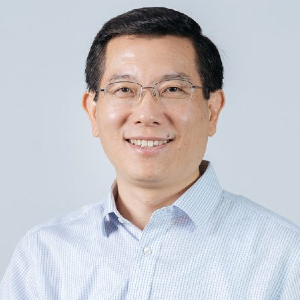
Public health, mobility and information diffusion 
Human movement and contact rates play fundamental roles in shaping the transmission patterns of infectious diseases, e.g., COVID-19. Thus, mobility data have been used as a proxy for measuring the effectiveness of interventions, such as stay-at-home orders and other social distancing measures. This theme aims to establish relationships between human mobility and disease transmission so that disease transmissibility can be simulated under different scenarios of interventions. As mobility is closely related to an individual’s age and their socioeconomic status, more details pertaining to mobility and mobility networks should be investigated. The findings may help make more pertinent public health policies targeting certain communities and groups of people.
On the other hand, the diffusion of misinformation about disease transmission may influence people’s preventive/health behavior, confidence on defeating the disease and trust on the leadership. Such dynamics should be well understood to facilitate preventive policy making.
Projects:
Assessment and implementation of non-pharmaceutical interventions to avoid COVID-19
resurgences: Accounting for human mobility, contacts and behavioral change using both big and small data (CRF, C4139-20GF, 2021-2022, PC: Professor Huang Bo)
In this proposed project, we aim to overcome the abovementioned problems by developing methods to derive social contacts directly from anonymized population-level mobility data.
We will thus measure the intensity of physical distancing in terms of mobility data and derived social contacts data, using Wuhan and other Chinese cities as study areas. We also propose to conduct online surveys to collect data on human contact and behavior before, during and after the COVID-19 outbreak. These data will be integrated with the above big mobility data and incorporated into a modified susceptible-exposed-infectious-recovered (SEIR) model to simulate the effect of various scenarios of government interventions.
This proposed project will ultimately provide a novel methodology by which spatial mobility and human behavioral data can be processed and analyzed to yield a more precise modeling of COVID-19 transmission, and strategies and evidence to guide COVID-19 interventions and preparedness across the world during the post-lockdown period.
(Mis)communication, Trust, and Information Environments : A Comparative Study of the COVID-19 “Infodemics” in Four Chinese Societies (CRF, C4158-20GF, 2021-2023, PC: Professor Wei Ran)
A hallmark of the COVID-19 global pandemic is rising infodemics, which refers to “information epidemics” or “epidemics of rumors”—“the rapid dispersal of information of all kinds, including rumors, gossip, and unreliable information” spread “instantly and internationally” through communication technologies such as mobile phones, social media, and the Internet. The “over-abundance of information” that makes it hard for the general public “to find trustworthy sources and reliable guidance when they need it”. Infodemics often appear to be mis, dis and mal-information. Like a virus itself, infodemics can cause public distrust, panic, and fear. This project aims to take a holistic approach to examine the emergence and spread of false and misleading information about the COVID-19 pandemic on digital media in four Chinese societies: Mainland China, Hong Kong, Singapore and Taiwan. It also explores how some widely diffused informedic messages on social media affect the publics’ perceived risks and measures taken to protect themselves. Methodologically, we combine big data analytics with social scientific research methods such as surveys and focus groups to explore, clarify, and theorize the dynamics of infodemic diffusion during the COVID-19 pandemic, which includes the dimensions of emergence, diffusion, and consequences. Based on the proposed model and empirical evidences, the deliverables of this project include (1) valuable and immediate policy suggestions to spot and contain infodemic messages at the early stage of a public health crisis; (2) a user-friendly online application to monitor future emerging infectious diseases; (3) policy recommendations for containing and countering the COVID-19 infodemics with correction messages.
Theme Co-leaders:


